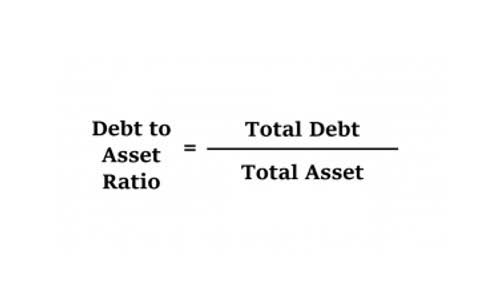
It is worth remembering that if the company sells more inventory through the period, the bigger the value declared as the cost of goods sold. Generally, a high turnover ratio is favorable because it signifies efficient product sales. Conversely, a low inventory turnover ratio raises concerns about sluggish sales for the business.
How do we calculate the cost of goods sold using inventory turnover ratio?

It’s calculated by averaging inventory balances, typically at the start and end of the period. You will need to choose a time frame to measure the ITR, such as a month, quarter, or year since you’ll use the inventory turnover formula to calculate your ITR over a specific period of time. A .31 ratio means XYZ Company sold only about a third of its inventory during the year. Determining whether this is a low or high ratio depends on the type of business. If XYZ Company is a bookstore, this number would indicate that it has poor inventory control, which means the purchasing department is not in sync with the sales department. However, if it is a company that sells high-ticket items, such as cars or houses, a lower ratio might make more sense.
Inventory Turnover Ratio: What It Is, How It Works, and Formula
As an example, let’s say that a business reported the cost of goods sold on its income statement as $1.5 million. It began the year with $250,000 in inventory and ended the year with $750,000 in inventory. We believe everyone should be able to make financial decisions with confidence. 11 Financial may only transact business in those states in which it is registered, or qualifies for an exemption or exclusion from registration requirements.
- Conversely, a low turnover might signify overstocking, while a high turnover might point to lost sales and understocking.
- To calculate it, you must know your cost of goods sold and average inventory — metrics your inventory management software might be able to help you figure out.
- Calculating this ratio can help businesses make better decisions on manufacturing, pricing, marketing, and purchasing new inventory.
- Understanding what’s not selling can help you understand whether you need to adjust pricing by offering discounts or even dispose of dead stock.
- It is worth remembering that if the company sells more inventory through the period, the bigger the value declared as the cost of goods sold.
- On the contrary, a low value indicates that the company only processes its inventory a few times per year.
- To boost your stock turnover even more, it’s worth going beyond basic calculations and using statistical demand models to predict demand changes.
Ask Any Financial Question
This team of experts helps Finance Strategists maintain the highest level of accuracy and professionalism possible. Finance Strategists has an advertising relationship with some of the companies included which of the following factors are used in calculating a companys inventory turnover? on this website. We may earn a commission when you click on a link or make a purchase through the links on our site. All of our content is based on objective analysis, and the opinions are our own.

This ratio can be improved by better anticipation of future needs, lower prices, more sales, better management of inventory, eliminating old stock, and reducing purchase quantity. Additionally, keeping inventory for a long time can cause it to become outdated. On the other hand, having insufficient stock might lead to production halts and unhappy clients. Inventory affects the profits, tax liability, and value of assets of the company. So, the inventory should be managed with proper analysis and focus on balancing over-inventory and low-inventory to grab a higher turnover ratio.
What does ITR stand for?
Inventory is important for every business because it shows how many goods and raw materials are ready to sell. It also helps you manage assets better and figure out when to restock or shift resources. Business credit cards can help you when your business needs access to cash right away.
Practical Example of Inventory Turnover Ratio

On the other hand, a low inventory turnover ratio in relation to a particular item indicates its slow movement. This could be due to a problem with the goods being sold, insufficient marketing, or overproduction. However, there’s no one ratio for every business, and inventory turnover can vary greatly by industry. https://www.bookstime.com/ With that in mind, it’s best to compare your turnover ratio with historical data for your own business, as well as the average for your industry. Alliteratively, we could pull in additional carmakers to get a broader representation of what a “good” inventory turnover ratio is in the auto industry.
- Inventory needs to be managed and must strike a balance that is neither storing too much inventory nor too little inventory.
- This formula gives a clear picture of how effectively a company’s inventory is being utilized in relation to its sales.
- Walmart & Costco are retailers of general merchandise while Caterpillar & Deere are manufacturers of heavy machinery.
- A low inventory turnover ratio, on the other hand, indicates that the business is not selling its inventory quickly enough, and weak sales could be a sign of financial trouble.
- Average inventory does not have to be computed on a yearly basis; it may be calculated on a monthly or quarterly basis, depending on the specific analysis required to assess the inventory account.
- Inventory turnover ratio is an efficiency ratio that measures how well a company can manage its inventory.

For example, listed U.S. auto dealers turned over their inventory every 55 days on average in 2021, compared with every 23 days for publicly traded food store chains. Inventory turnover is an especially important piece of data for maximizing efficiency in the sale of perishable and other time-sensitive goods. An overabundance of cashmere sweaters, for instance, may lead to unsold inventory and lost profits, especially as seasons change and retailers restock accordingly. Inventory turnover measures how often a company replaces inventory relative to its cost of sales. This ratio just gives an average number of times the inventory company sold its inventory and does not give an exact number.
What factors influence the inventory turnover ratio?
- It compares the cost of goods sold (how much it costs you to buy inventory) with the average inventory for a particular period, such as weekly (weeks on hand inventory) month, quarter, or year.
- However, tracking it over time or comparing it against another company’s ratio can be more insightful.
- Secondly, average value of inventory is used to offset seasonality effects.
- By integrating seasonal trend forecasting and production planning, capacity planning proves invaluable in optimizing inventory turnover ratios.
- While you never want to order so little product that your shelves are bare, it’s typically in your best interest to order conservatively, especially for a new product that you’ve never offered before.
- Understand the qualitative aspects of entire industries or specific companies.